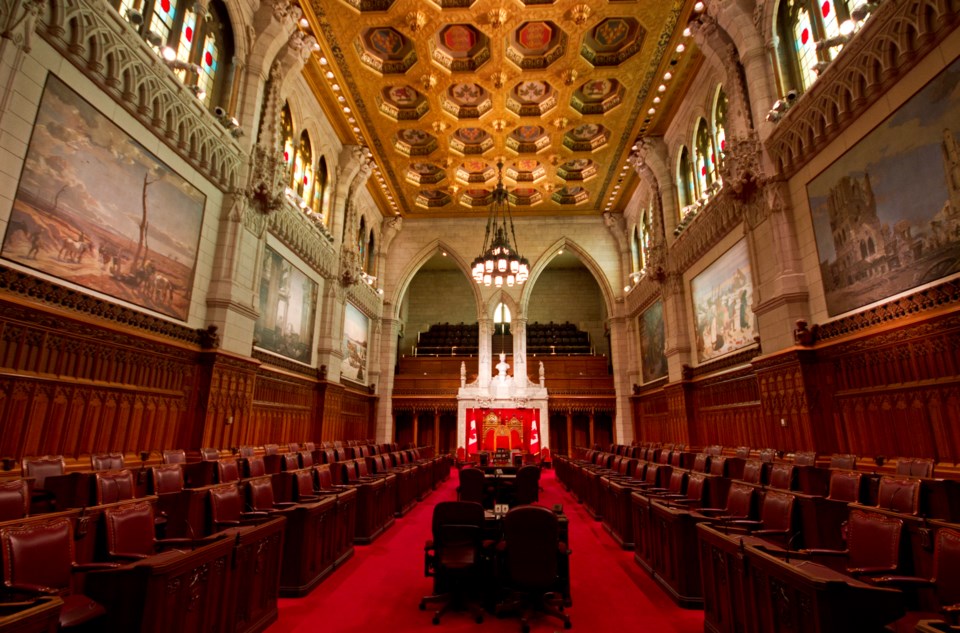In this century, Canadians have been mostly unaware of the Senate.
The chamber for “sober second thought” has not been a main character in public life as much as it was in the 1980s, when its performance – or lack thereof – on matters such as taxation and abortion was heavily scrutinized. Calls for the abolition of the upper house, which used to appear in equal measure from the “left” and the “right,” have also subsided.
I have had the opportunity to ask Canadians about the Senate for more than a decade, and the generational fluctuations are usually fascinating. This month, Research Co. and Glacier Media looked into these perceptions again and found a public that remains confused about what to do with the legislative body.
When answering a question about their own views of the Senate, many Canadians – albeit short of a majority at 45 per cent – think Canada needs a Senate, but Canadians should be allowed to take part in the process to choose senators. This finding is unchanged . The group includes 48 per cent of Canadians aged 18 to 34.
About one in four Canadians (24 per cent, down three points) believe Canada does not need a Senate and want all legislation to be reviewed and authorized by the House of Commons. Canadians aged 55 and over are more likely to back the concept of a unicameral Canada (35 per cent) than their counterparts aged 35 to 54 (20 per cent) and aged 18 to 34 (17 per cent).
The status quo “on paper” is endorsed by just nine per cent of Canadians (unchanged), who think Canada needs a Senate and the current guidelines that call for appointed senators should not be modified. For more than one in five Canadians (21 per cent, up one point), none of these three answers comes close to their own point of view.
A separate question, which posits four choices, finds even less ground for consensus. We see one-third of Canadians (33 per cent) preferring to reform the Senate to allow Canadians to directly elect their senators.
Support for establishing a process that concludes with Canadians casting ballots for Senate candidates is highest in the western provinces: 41 per cent in British Columbia, 38 per cent in Manitoba and Saskatchewan and 36 per cent in Alberta. The numbers fall in Ontario (33 per cent), Atlantic Canada (28 per cent) and Quebec (25 per cent). The provinces where the “reform” movement was born are still aching for the equal, elected and effective upper house that was promised in the early 1990s.
Smaller proportions of Canadians prefer other courses of action, such as having a selection committee that would appoint non-partisan senators (17 per cent), abolishing the Senate of Canada altogether (14 per cent) or the prime minister appointing senators (six per cent). For 30 per cent of Canadians, none of these choices are convincing.
Abolishing the lower house, an intrinsically complicated endeavour that would require revisiting the constitution, is more popular among Canadians aged 55 and over (23 per cent).
In no province do we see more than 20 per cent of residents endorsing the concept of abolition. In fact, Canadians who voted for the Conservative Party of Canada and the New Democratic Party (NDP) in 2021 are more likely to back a reform that would lead to direct elections (50 per cent and 38 per cent, respectively) than to wish for the Senate to completely disappear (16 per cent and 17 per cent respectively).
The current way in which upper house members are appointed has not been embraced by Canadians. Prime Minister Justin Trudeau has named only senators that were recommended by an arm’s-length advisory body and not directly appointed by him. Fewer than three in 10 Canadians (28 per cent, down nine points) think Trudeau’s changes have made the Senate “better,” including 44 per cent of Liberal voters in 2021.
For 20 per cent of Canadians – and 40 per cent of Conservative supporters – the “Trudeau way” has made the Senate worse, while 31 per cent see no change and 21 per cent are undecided.
In spite of this apparent confusion about the Senate, we continue to see a majority of Canadians (56 per cent, up two points) who predict that they will one day be able to directly elect their senators. The proportion of upper house ballot “dreamers” reaches 60 per cent in British Columbia and 59 per cent in Ontario.
Over the past three years, the relationship of Canadians with the Senate has not changed. While more than half of the country’s residents believe that they will eventually be able to vote for the members of the upper house, the proportion of enthusiastic promoters of reform falls to only one-third.
Mario Canseco is president of Research Co.
Results are based on an online study conducted on December 10 to December 12, 2022, among 1,000 adults in Canada. The data has been statistically weighted according to Canadian census figures for age, gender and region in Canada. The margin of error – which measures sample variability – is plus or minus 3.1 percentage points, 19 times out of 20.




